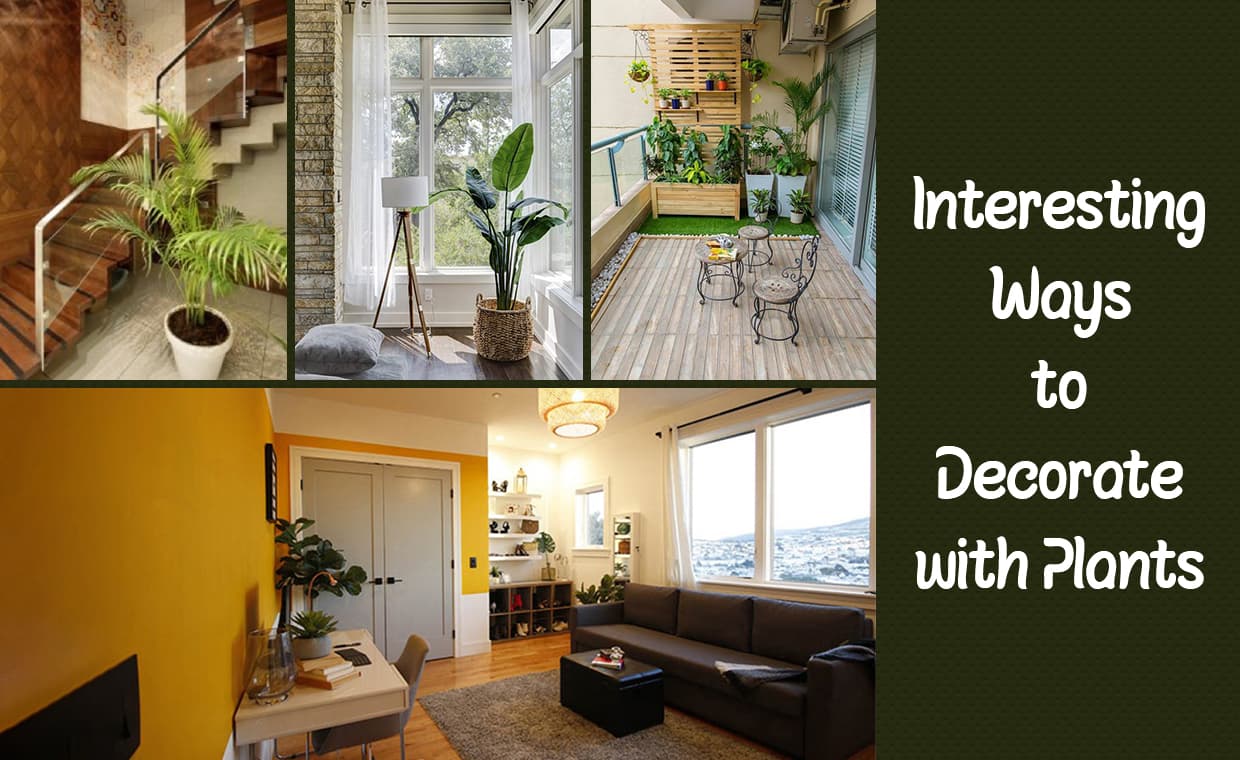
The craze for indoor gardening has increased especially during and after pandemic as people are now seeking more positive energy and wish to spend time constructively while staying indoors. The indoor plants can be a great addition to your home due to their low maintenance, space efficiency, low-light demand especially low-light indoor plants, and low water requirement unlike the outdoor plants, and they look awesome. Also, these plants can easily add an eco-beauty in your interior, and you can indulge in some interesting work cum pleasure cum entertainment. The pleasure and luxury to enjoy greens in the small space is perhaps the reason behind choosing indoor plants by homemakers.
However, indoor plants in general cannot adjust the nutrients of the soil and require more complex fertilizing than the outdoor plants that have more strength to accommodate the adverse conditions. All the corners in an apartment may not be suitable for all indoor plants to keep. Let’s check first the requirement of light for some common plants widely available in nurseries, and easier to grow.
01. The common air-purifying plants with therapeutic benefits include Bamboo palm (Chrysalidocarpus Lutescens), English Ivy (Hedera Helix), Aloe Vera, and Dracaena, etc. These plants are good looking and hardy enough, and widely available at reasonable cost, but they need indirect sunlight to grow well. You have to arrange bright shades for them.
02. There are other plants like Spider Plant (Chlorophytum comosum), Boston Fern (Nephrolepisexaltata), Pothos (Epipremnumaureum), Peace Lily (Spathiphyllum “Mauna Loa”), Chinese Evergreen (Aglaonema modestum) and Snake Plant (Sansevieria rifasciata), which are easy to grow and low in maintenance: these indoor green beauties don’t require the support of direct sunlight to grow and sustain beautifully. These plants are suitable for beginner indoor gardeners.
Places where you can Keep Indoor Plants At Home
01. Air-Purifier Plants For Bedroom
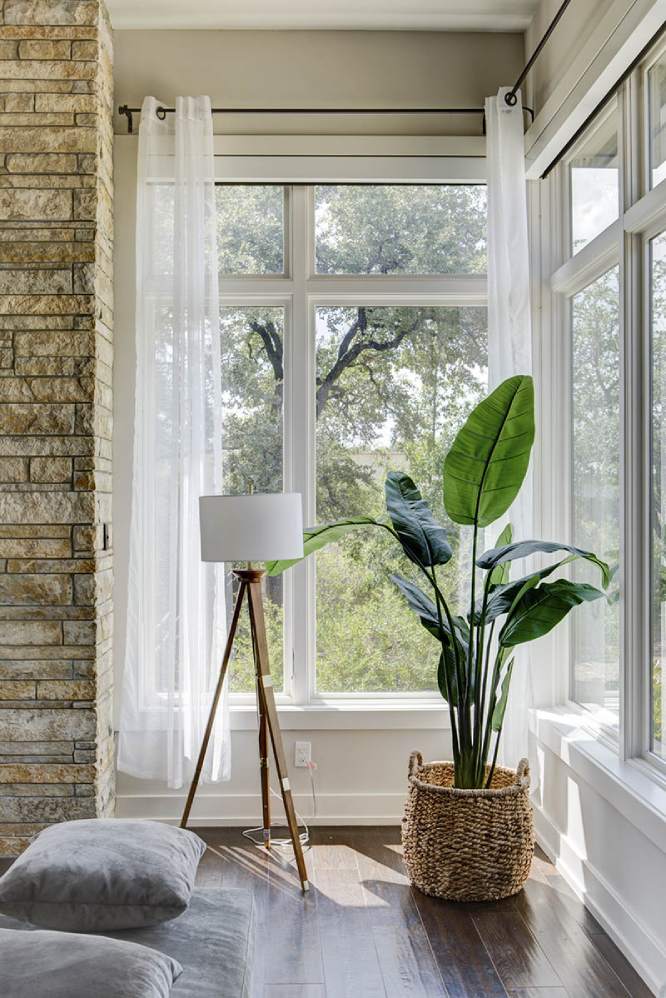
Instead of dense foliage and flowering shrubs that attract insects and may require relatively greater sunlight, you may think of keeping cacti (Mammillaria sp., Ficus indica etc), rubber plant (Ficus elastica), ZZ plant (Zamioculcaszamiifolia), Echeveria, money plant, and variegated lucky bamboo (Dracaena sanderiana) in the bedroom. Plants like orchids, succulents, snake plants and bromeliads are known as air purifier that are supposed to improve indoor air quality naturally without any extra cost of using air purifying gadget.
Placement: Bedside table, open wall shelves, windowsill and on floor.
02. Small Plants For Bathroom

A bathroom is a moist place and hardly gets ample sunshine inside. If you want to place here some green beauties, you need to select plants that are best grown under shade and in moist environment. Fern(Asparagus setaceus, Asplenium nidus) is one of the best options, and it is available in different varieties.
Furthermore, as natural air-freshener, the Chinese Money Plant (Pilea peperomioides), Peperomia, Air Plant (Tillandsia), cactus, Peace Lily (Spathiphyllumwallisii), Spider Plant (Chlorophytum comosum) and Snake Plant (Dracaena trifasciata) will help you to add a green touch to your bathroom without much demand of sunlight.
Placement: Countertop, shelves, by the bathtub and on the window.
03. Herbs and Succulents For Kitchen
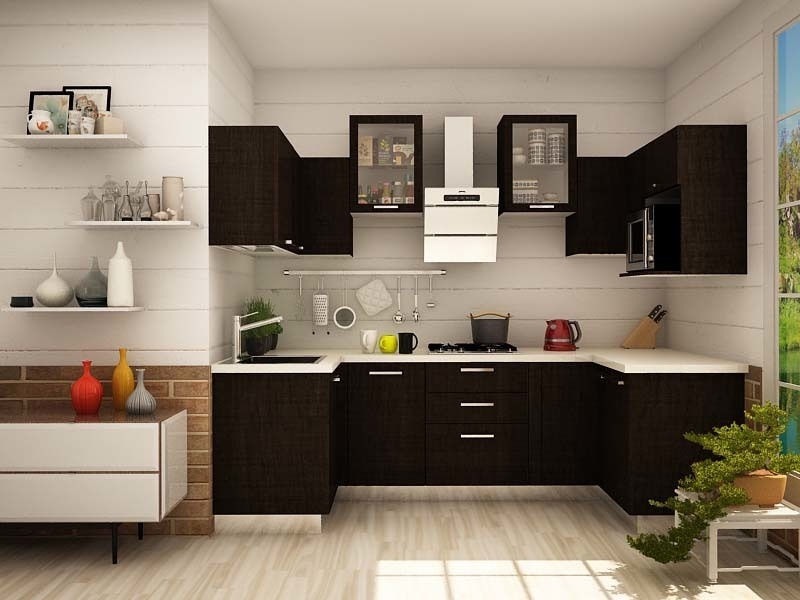
Fern (Asparagus setaceus, Asplenium nidus), Spider Plant, Peperomia, Aloe, Devil’s Ivy (Epipremnumaureum), English Ivy and Philodendron along with herbs like parsley, mint, basil, sage, rosemary, cilantro and thyme will be perfect additions to your kitchen-garden. However, these herbs love bright shades, so place them in the kitchen accordingly.
Placement: Shelves and on window
04. Ornamental Plants for Living Room

Your living room can get a face lift with green plants around. Irrespective of your living room décorit will look lively with cactus (moon cactus, Euphorbia fruticosa, Notocactusleninghausiietc), bonsai, Syngonium, Caladium, Sansevieria, bamboo sticks, Chinese Evergreen, Philodendron Birkin, Yucca, Peace Lily, Dragon Tree (Dracaena marginata) and Cast-iron Plant (Aspidistra elatior).
Placement: Anywhere suitable: but preferable with the facility of occasional light and air
05. Shrubs, Succulents and Cacti For Staircase

Various cacti like bunny ear, Mammillaria compressa, Gymnocalysium, etc. and lovely succulents like Tree houseleek (Aeonium), jade plant (Crassula ovate) and Echeveria elegans will look great on the corners of stairs and landings. Shrubs like Coleus, Calathea, Caladium, Dieffenbachia, Begonia, Ponytail Palm (Beaucarnearecurvata), Yucca and Fiddle Leaf Fig will also look great here.
06. Hanging Plants and Adding Varieties of Plants in Doorway and Balcony

You may use hanging planters to grow money plant, jade plant, fern, violets, air plant, spider plant, English Ivy and Christmas cactus. Place pots of cactus, dieffenbachia, philodendron, Ponytail Palm, Bromeliad, and Aloe on the doorway or at the balcony. The hanging planters are space saver and will offer you outstanding green view depending on their placement.
How to Maintain Indoor Plants
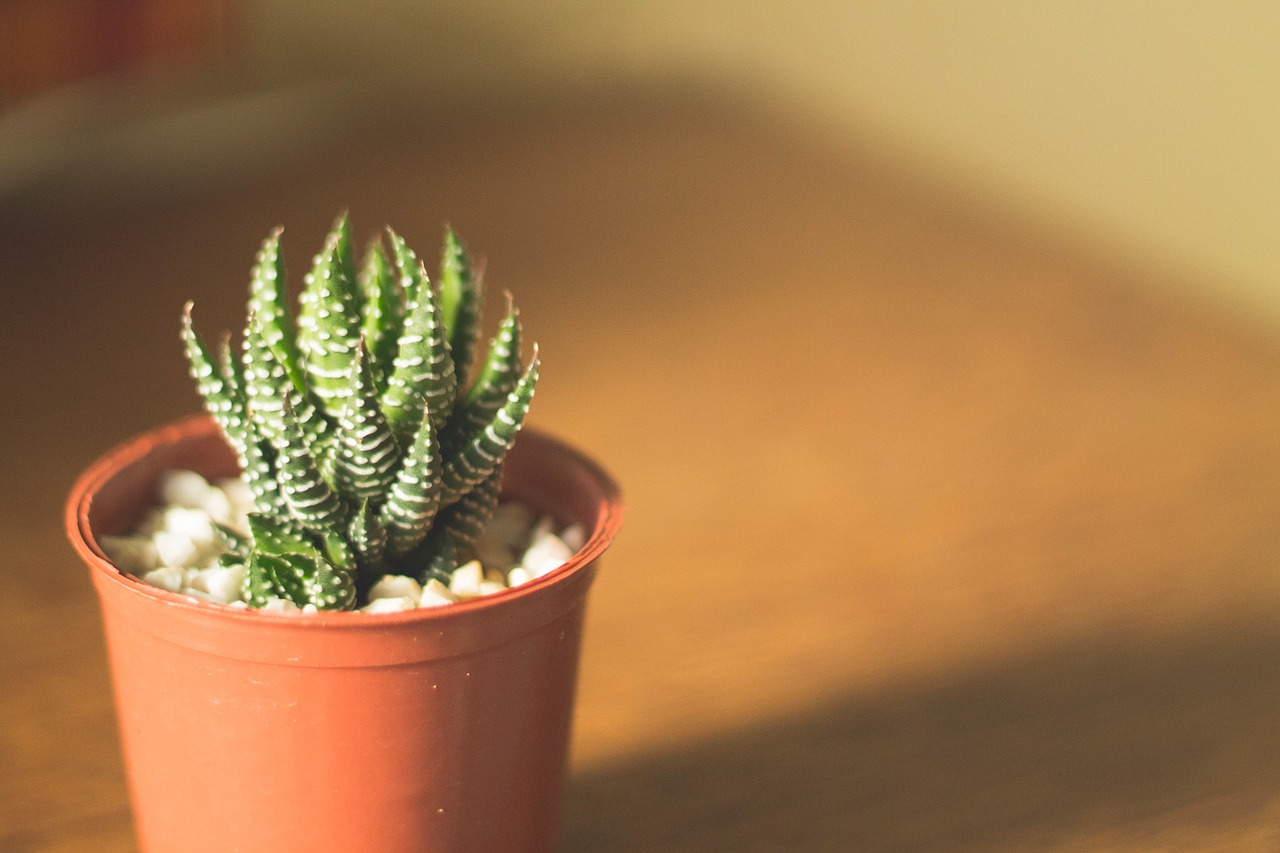
Although the indoor plants are low-maintenance plants requiring less water, sunlight and manure, there are a few points to care for your green buddies to excel in growth.
01. Keep Planters Uncongested:
Often people tend to keep plants too close to each other, replicating images shown online or in print media which are displayed mostly for showcasing the plants. You should avoid congesting the pots so that the plants can grow properly, and breathe comfortably.
02. Placing Plants with Sufficient Natural Light:
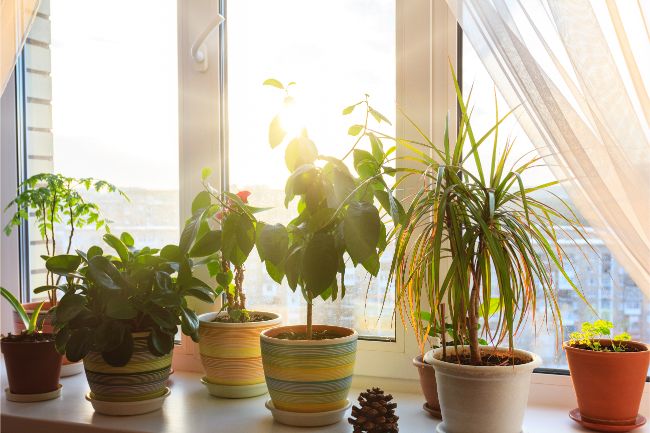
Not all plants, as advocated in nurseries, are grown without the support of direct sunlight. You should keep flowering plants like Anthurium and Peace Lily under indirect sunlight for 12-16 hours to get good yield. Foliage plants and cacti can thrive in 14-16 hours of indirect sunlight.
However, flowering plants may not be suitable for indoor placement. Speak to veteran nursery people before selecting an indoor plant.
03. Using Proper Pots with Drainage:
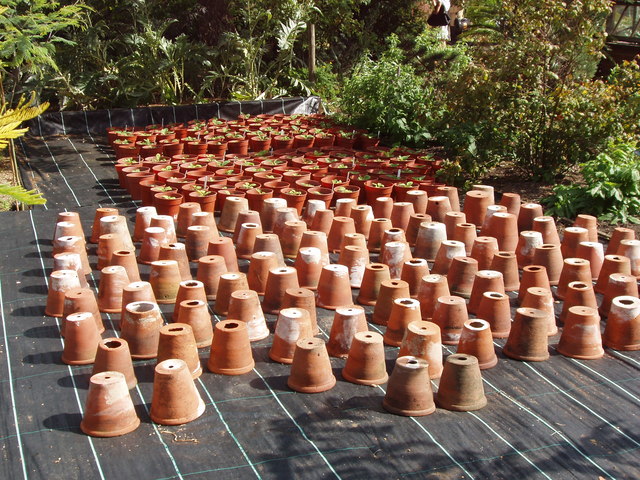
Again, like most online pictures, no plant can thrive well in a small pot. You should transfer a plant to a larger pot if the seller has provided a small-sized pot or the plant has the natural tendency to grow gradually. Always choose pots with small hole(s) at the bottom to ensure proper water drainage.
04. Using Proper Potting Mix and Fertilizer:

While some plants grow well in loamy soil, some usually thrive in sandy soil and coco peat mix. Take help from an experienced gardener to know which potting mix works great for the plants you have selected. Also, learn the proper dosage and frequency of fertilizer and pesticide to keep your green babies healthy, blooming and well-maintained.
05. Keeping Water at The Room Temperature:
Water should be of 200-250 C temperature (determine according to the region you live in) generally, which you can use for watering the plants. Use mineral water and make sure that the water temperature neither becomes too warm to damage roots nor too cold to dormant the growth.
06. Increasing Or Decreasing Humidity As Required:
Avoid moving plants too much and adjust the humidity as required by the plants. It is better to keep plants with similar tolerance to humidity in one room. If you notice wilted or dried parts, group plants together and spray on them. Plants like cacti do not relish in anaugmented humid condition.
07. Not Overwatering Or Keeping Plants Dehydrated:
Look out for mold and algae formation on the soil or pot as it is a sign of over-hydration. Do not overwater as standing water can rot the roots. Cacti and succulents need a few days’ time without water. Discolored leaves, cracked soil, yellowed or dried leaves mean the plant is dehydrated and you need to water it.
To know more in detail about how to maintain indoor plants, read here:
Benefits of Keeping Plants Inside Home

From enhanced supply of oxygen to increased productivity, from better mental health with alleviated stress to peaceful sleep –the benefits of indoor plants are manifold. A research conducted on Indoor plants says that houseplants or indoor plants can remove the amount of toxins from our home within 24 hours. According to Sophie Lee (Published in Why Indoor Plants Make You Feel Better) plants help to regulate humidity and increase levels of positivity around. Seeing greenery and nature helps to feel more relaxed and it invokes mental calmness as well.
Want to know about the air purifying plants? Worry not, because you don’t need any extra efforts to Google it… We have a very interesting article on it: 10 Best Air Purifying Plants to Clean the Air in Your Homes! With houseplants, the indoor atmosphere may get free from toxins and allergen chemicals like ammonia, formaldehyde, xylene, benzene, acetone, trichloroethylene etc.
Make sure that the leaves do not have a layer of dust and keep them (not lucky bamboos) in sunlight once or twice in a month so that they can purify the air more efficiently. Plants add a lively touch to the dull indoors and make you happy as you watch them grow or bloom.
The therapeutic benefits of horticulture are also evident in patients who take pain medications or have high blood pressure, irregular heart rate, fatigue and anxiety. According to American Horticultural Therapy Association, horticultural therapy helps improve memory, cognitive abilities, task initiation, language skills, and the power of socialization. In physical rehabilitation, horticultural therapy can help strengthen muscles and improve coordination, balance, and endurance.
Life Cycle of Plants
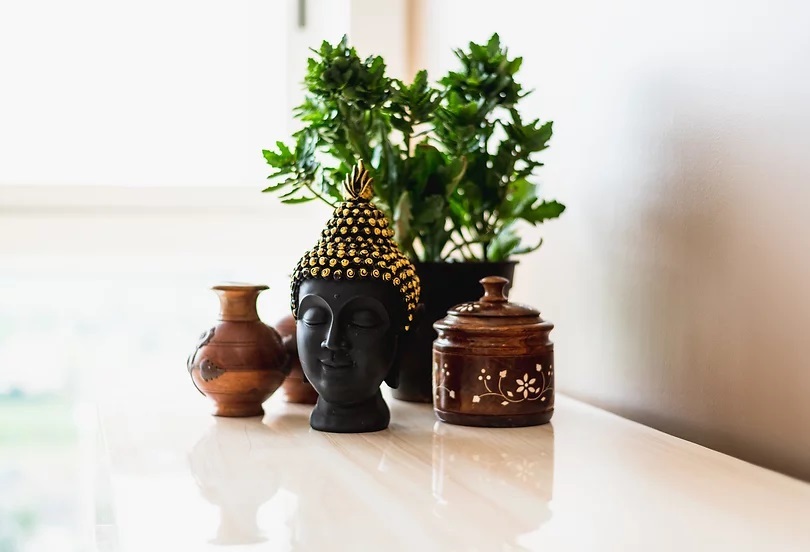
It is not your fault if the Moon Cactus dies within three years or the lucky bamboo withers in a year. Not all plants survive long. Persian Violet (Exacum affine), Poinsettia (Euphorbia pulcherrima) and Caladiums are perennials i.e. become unattractive after a successful blooming period and they need proper care to survive to the former glory. Plants like Pilea, Coleus, Painted-leaf Begonia and Herbst’s blood leaf (Iresineherbstii) need to be replaced with new ones after 1-2 years as they become unattractive and often die.
Indoor plants are not only a matter of fashion but also your responsibility. Research about the plants, ask the experts whether they can survive indoors and make sure the plants are properly watered while you are away for a few days. Also, if you tend to travel a lot or are a newbie in gardening, start with easy-to-care plants like areca palms, geraniums, snake plant, spider plant and Aglaonema.In the conclusion it will be interesting to confirm that, there are suitable places where indoor plants can be kept in every home: you only need to explore it. Extracting information about maintaining plants, its benefits of indoor plants at home and the life cycle of plants turns out to be helpful if you also want to inculcate the indoor plants at home with spontaneity and pure pleasure. Rewards? Pure joy and delight which is priceless.
Author Bio
Sanjukta Ganguly – I am Sanjukta Ganguly from Kolkata. I have 9+ years of experience in content writing. I have written for multiple niches and genres like, health, travel, pregnancy, love and relationship, dating, hosting services, and WordPress, Press Release, Web Designing, Case Study, Thesis, Proof Reading, Academic Writing, etc. I can handle the work of 4000-5000 words daily.































